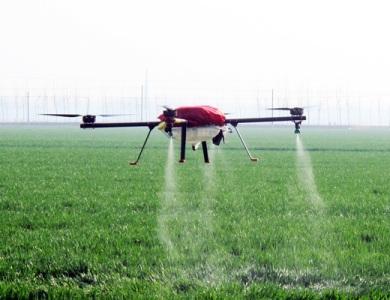MUMBAI, 17 May 2019 : With agriculture drones still out of reach for million famers, India's private university, Lovely Professional University (LPU) has developed a drone named 'flying farmer' that will help majority of farmers to use drone for agri-related activities.
To know more, AgriTimes.co.in spoke with the university to know more about the drone and its technological achievements. Below are the full excerpts...
Can you tell more about your drone called Flying Farmer?
‘Flying Farmer’ is a drone that can be exclusively deployed in farming and field survey. It is a wireless, sensor device that can be used in mapping and survey of yields and biomass. It estimates the nutrient content of the soil to aid production growth and reduce crop damage.
The ‘Flying Farmer’ is designed to solve two major agricultural issues faced by farmers – pesticide treatment and weed detection. With rising labor costs and a shortage of labor, drone technology is hypothesized to replace human intervention in delivering pesticide treatment. Pre-programmed drones can target specific farm areas and crops to deliver pesticides, avoiding wastage and over the use of pesticides. Secondly, human weed detection is inefficient and prone to error, leading to lower produce. Drones, programmed with computer vision algorithms and infrared sensors can detect the exact position and nature of weeds and transmit information to the farmer for timely action. The field trials conducted at LPU led to an improvement of 15-20% in produce quantity.
How this will help farmers when farmers don't have money to buy seeds?
This technology is developed keeping in mind the financial limitations of Indian farmers. Therefore, the maximum amount one can spend on buying this device is Rs. 15,000. This could be a one-time investment that can help farmers to improve their crop quantity.
Other than big farmers, how does your drone benefit small and marginal farmers?
If you look at the cost of our device, it is priced keeping in mind small and marginal farmers. It is very difficult to access a surveillance technology such as this at INR 15,000. We have priced it nominal so that every farmer can benefit from it.
It has been learned that Flying farmer drone will be open source. Why?
The reason behind keeping Flying Farmer as open source is that we want to keep it as cost effective as possible so that it can be affordable for maximum number of farmers.
How many farmers will benefit from this in the next five years?
Since this is an open source platform, majority number of farmers will be able to take advantage from it.
Has LPU tie-up with Indian agriculture ministry to promote it?
Once we get the initial response from the market we will have discussions with the state and national agriculture ministry.
Which are in agriculture, your drone will be used, like crop monitoring, horticulture?
The ‘Flying Farmer’ is designed for pesticide treatment and weed detection.
How much the drone will cost and how many hours it will fly in a charge?
The cost of the Drone will be approximately Rs. 10,000 – 15,000 and it can fly for 25 minutes on full charge.
Who are the team behind this drone?
A team of 45 students and 5 faculty members from LPU’s Electronics, Mechanical and Agricultural Engineering department worked together to develop this technology. It has been conceptualized, designed and tested by the students in the campus farmland.
What made you design and build the drone?
The ‘Flying Farmer’ is designed to solve two major agricultural issues faced by farmers – pesticide treatment and weed detection. With rising labor costs and a shortage of labor, drone technology is hypothesized to replace human intervention in delivering pesticide treatment which would help cut down the labour cost for the farmer.




















